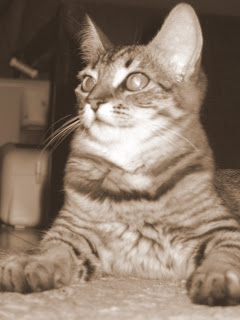...from my 7 page travel narrative of my experiences in Trinidad and Tobago, "Between Worlds," for your reading pleasure. I was in T&T from July 6th through 21st:
On the smaller island of Tobago, the population is something like 98% black, and we were lumped with the only other white people on that island: tourists. In line for a beer at the weekly street party, Sunday School, in Tobago, a guy with short wide dreds sticking at angles from his head started shouting his order and reaching his money forward. I hadn’t had anything to drink since supper at 6. It was 10:30. My face always gives away my emotions, and I expressed my displeasure through the crease in my forehead.
“Hey tourist, don’t look at me like that.”
I may have given him a look, but it certainly wasn’t undeserved. “Well, I was here first and I’m thirsty,” I heard myself whine.
“Okay,” he thought out loud, “Then you order my drink.” He handed me two five dollar bills. It seemed a fair resolution.
I ordered his Carib, and passed the bottle back to him along with his dollar in change. The whites of his eyes were more the color of the red beads on his red, yellow, and green necklace. Rasta colors, taken from the Ethiopian flag. Green earth. Yellow gold. Red blood. My skin was reddened from the sun, but I was still colored white. “And you have to dance with me before you leave,” he commanded.
I wanted to tell him I wasn’t a tourist. But what could I say I was? A student? A traveling writer? What difference would he see?
 We had a visitor today. Kristin called her Muffin and Anth seemed quite attached, but I think she already has a home-- seems pretty taken care of and domesticated. Well, we had fun playing with her for a little bit anyways. I made an improvised cat toy out of a card board strip (a great success). She also hunted down a fly and a moth. She seems young, as she doesn't quite fit into her paws yet. She had a bushy tail like a raccoon.
We had a visitor today. Kristin called her Muffin and Anth seemed quite attached, but I think she already has a home-- seems pretty taken care of and domesticated. Well, we had fun playing with her for a little bit anyways. I made an improvised cat toy out of a card board strip (a great success). She also hunted down a fly and a moth. She seems young, as she doesn't quite fit into her paws yet. She had a bushy tail like a raccoon.















 Okay, so maybe the Caribbean Sea is slightly more blue than the Allegheny River ...
Okay, so maybe the Caribbean Sea is slightly more blue than the Allegheny River ... but it's' just as green on
but it's' just as green on 


